Tawa hallae research and discussion topics
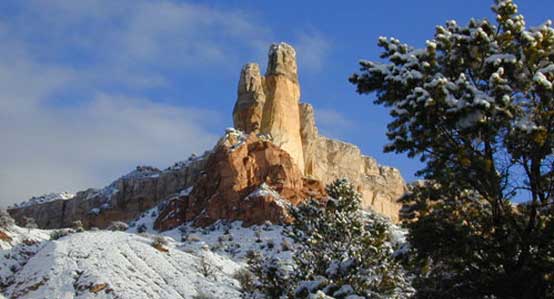
New is maybe not the best word since Tawa hallae last walked the Earth 214 million years ago.
The discovery of Tawa tells us a great deal about the early evolution of dinosaurs.
Tawa belongs to the dinosaur group that includes T. Rex and Velociraptor – the theropods.
The majority of the theropods went extinct by 65 million years ago.
But a few lineages survived to give rise to modern birds.
A lot of these theropods have really hollow bones, so when they get preserved they get really crunched.
At that time all the land on Earth had not yet separated, through continental drift, into the different continents we see today
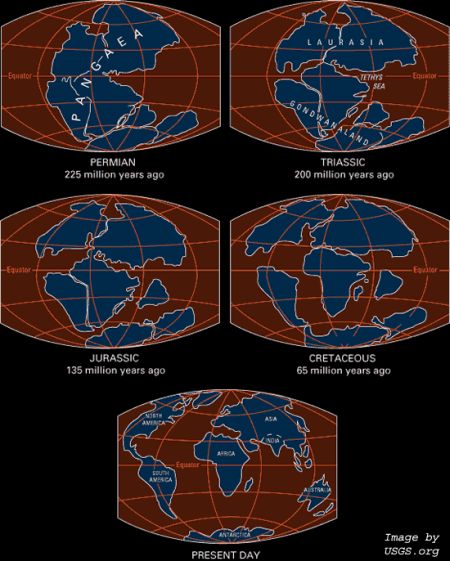
If you have continents splitting apart you get isolation.
We discovered they were only distantly related but that each species had close relatives in South America.
They did not evolve locally from a common ancestor.
It turns out a variety of other reptile groups made multiple trips from the northern and southern continents.
Why aren't there any sauropod or ornithischian dinosaurs in North America during the Triassic?
But only the carnivorous dinosaurs found the North American climate hospitable at that time.
Others placed it among the earliest of the theropods.
The big question was whether carnivorous traits arose in Herrerasaurus and in theropods separately.
This shows that these did not arise independently and that Herrerasaurus is indeed a theropod.
So once the dinosaurs appeared - in that part of Pangaea that is now South America - they must have spread out pretty quickly across the whole world.
They also rapidly diversified into the three main dinosaur lineages that lasted for more than 170 million years.
So that means all three lineages are present in South America pretty much as soon as the dinosaurs evolved.

10 December 2009
Tawa tales
It's amazing what you can work out from a bunch of bones dug out of the ground. Aided by amateur volunteers, palaeontologists in New Mexico led by Sterling Nesbitt have unearthed and pieced together a totally new dinosaur.
New is maybe not the best word since Tawa hallae last walked the Earth 214 million years ago. So let's say previously unknown.
The discovery of Tawa tells us a great deal about the early evolution of dinosaurs and shows how they spread right across the world from where they began, in what is now South America.
Tawa belongs to the dinosaur group that includes T. Rex and Velociraptor – the theropods. These mostly ate meat, walked on two legs and had feathers. The majority of the theropods went extinct by 65 million years ago, but a few lineages survived to give rise to modern birds.
The paper that describes Tawa is published in the 10 December issue of Science. lead author is Sterling Nesbitt, now a postdoctoral researcher at the University of Texas at Austin. He carried out the research – at Hayden Quarry on Ghost Ranch near the town of Abiquiu – with his colleagues, while still a graduate student at Columbia University.
Jaws dropped
The fossil bones of several dinosaurs were recovered by the researchers. But the type specimen of Tawa is a nearly complete skeleton of a juvenile, 70 centimetres tall at the hips and 2 metres long from snout to tail. Its body was the size of a large dog but with a much longer tail.
The first of the Tawa fossils – a thigh bone, part of a hip and some vertebrae – were found in 2004 by volunteers on a palaeontology course at Hayden Quarry. The course instructor then contacted Nesbitt about the fossils.
"When we saw them our jaws dropped," he says. "A lot of these theropods have really hollow bones, so when they get preserved they get really crunched. But these were in almost perfect condition."
So what do these dinosaur fossil bones tell us, apart from the fact that Tawa is a species of dinosaur we didn't know about before? Quite a lot, especially about dinosaur evolution.
Theropod travellers
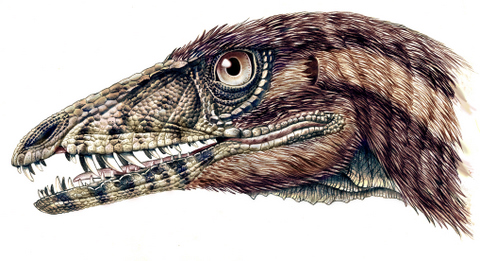
For a start the completeness of Tawa's skeleton let the scientists see that the animal had airsacs in the braincase and around the neck. That helped them to understand the evolutionary path as dinosaurs became more like birds.
Then the fact that the Tawa bones were found beside two other theropod dinosaurs from the same period tells an interesting story. At that time all the land on Earth had not yet separated, through continental drift, into the different continents we see today. Instead it was one supercontinent, called Pangaea.
"If you have continents splitting apart you get isolation," Nesbitt says. So all the carnivorous dinosaurs in a region would be expected to be closely related. But that's what we don't see."
Instead the research team found three distinct theropods, including Tawa, in the fossil-rich, Late Triassic beds at Ghost Ranch. "We discovered they were only distantly related but that each species had close relatives in South America," says Randall Irmis of the Utah Museum of Natural History and University of Utah, a co-author of the study.
This means that each of the three species came from a separate lineage before moving to the part of Pangaea that is now North America. They did not evolve locally from a common ancestor.
Dispersal
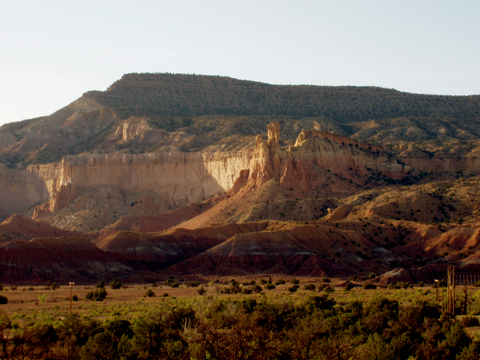
The discovery of several dinosaur species in one place that had all emigrated from elsewhere made the researchers wonder if other Late Triassic reptiles had done this too, says Irmis. "It turns out a variety of other reptile groups made multiple trips from the northern and southern continents [then parts of Pangaea] and back again during the Late Triassic, including other dinosaurs."
Different animals with different lifestyles were able to move freely across Pangaea. So in the Late Triassic there must have been no major barriers, such as large mountain ranges, to their movement about the continent. But that presents a puzzle, says Irmis. "Why aren't there any sauropod or ornithischian dinosaurs in North America during the Triassic?"
The answer, they decided, is that different climates across the huge continent suited different species. "We think all the major dinosaur groups had the ability to get to North America during the Late Triassic, and may have even passed through.
So what else can the scientists figure out from the Ghost Ranch bones?
Herrerasaurus
Well they shed a lot of light on another dinosaur called Herrerasaurus and its place in the scheme of things. There has been lively debate about this beast since its discovery in Argentina in the 1960s. It had some features in common with theropods, such as large claws and carnivorous teeth. But it lacked other theropod traits, such as pockets for airsacs in the vertebrae.

Some palaeontologists thought Herrerasaurus was so unusual that it couldn't possibly be a theropod – or maybe even a dinosaur. Others placed it among the earliest of the theropods.
The big question was whether carnivorous traits arose in Herrerasaurus and in theropods separately, says Nesbitt. "Or were they traits from a common ancestor? We had so few specimens of early theropods that it was hard to answer that question. But now we have Tawa, we think we have an answer."
Tawa has a mix of features found in Herrerasaurus and in well-known theropods. This shows that these did not arise independently and that Herrerasaurus is indeed a theropod. This in turn points to an interesting fact about dinosaur evolution. Herrerasaurus was found in a South American rock layer alongside the oldest members of the two other major lineages—the sauropods and the ornithischians.
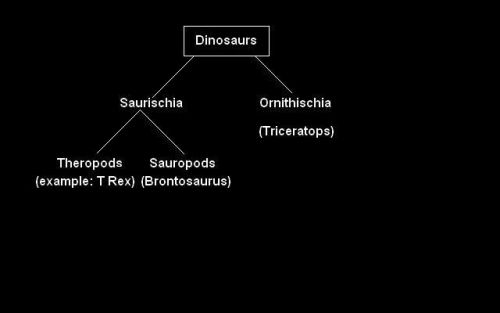
So once the dinosaurs appeared - in that part of Pangaea that is now South America - they must have spread out pretty quickly across the whole world.
They also rapidly diversified into the three main dinosaur lineages that lasted for more than 170 million years - the theropods such as Tyrannosaurus rex, the sauropods such as Apatosaurus (or Brontosaurus as it used to be called), and the ornithischians such as Triceratops.
Tawa pulls Herrerasaurus into the theropod lineage, says Nesbitt. "So that means all three lineages are present in South America pretty much as soon as the dinosaurs evolved."
More help with words
| ancestor | breed | carnivorous | evolution | fertile | fossils |
| habitat | herbivores | organism | original | PhD | reproduce |
| saurischian | sexual maturity | species | specimen |
